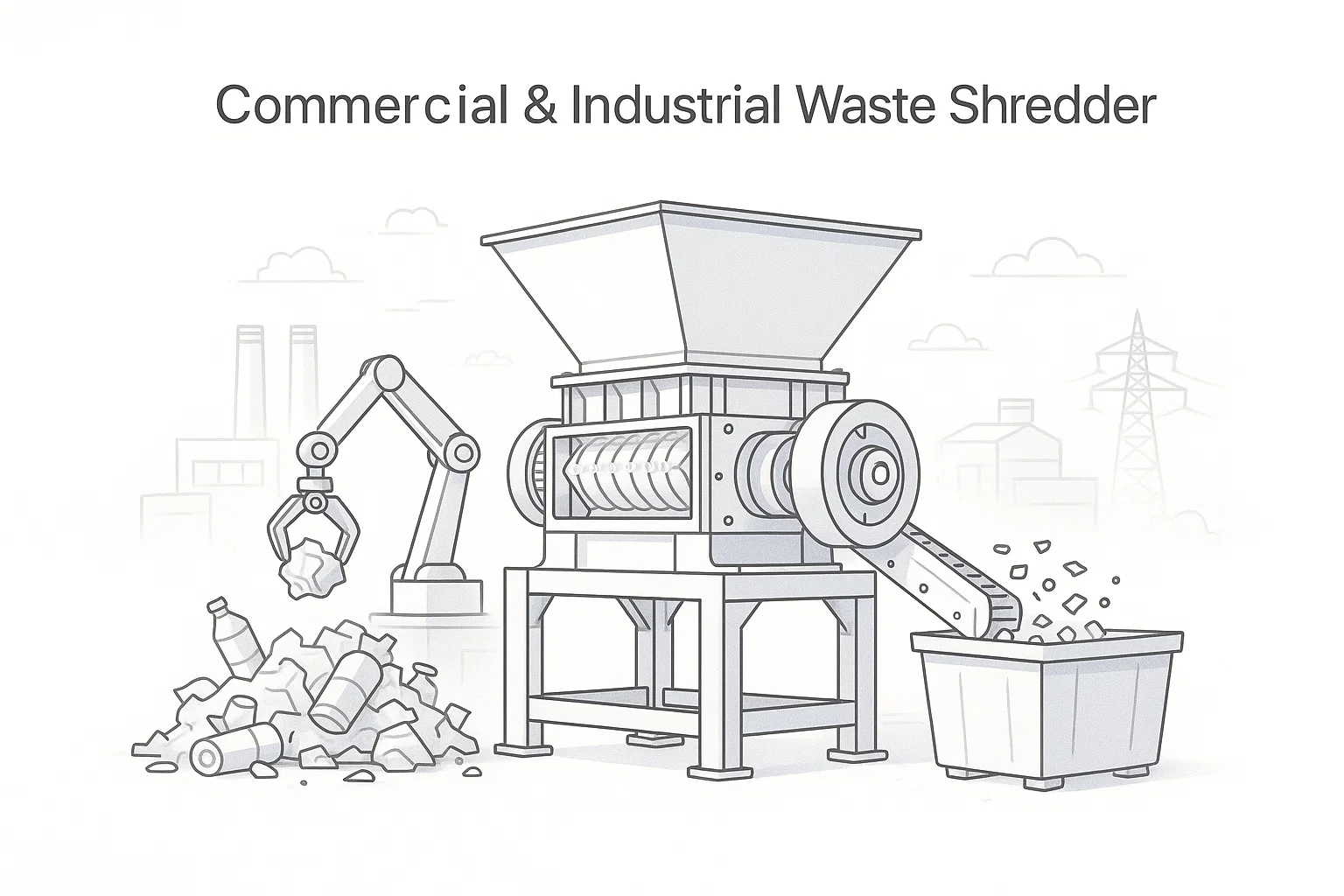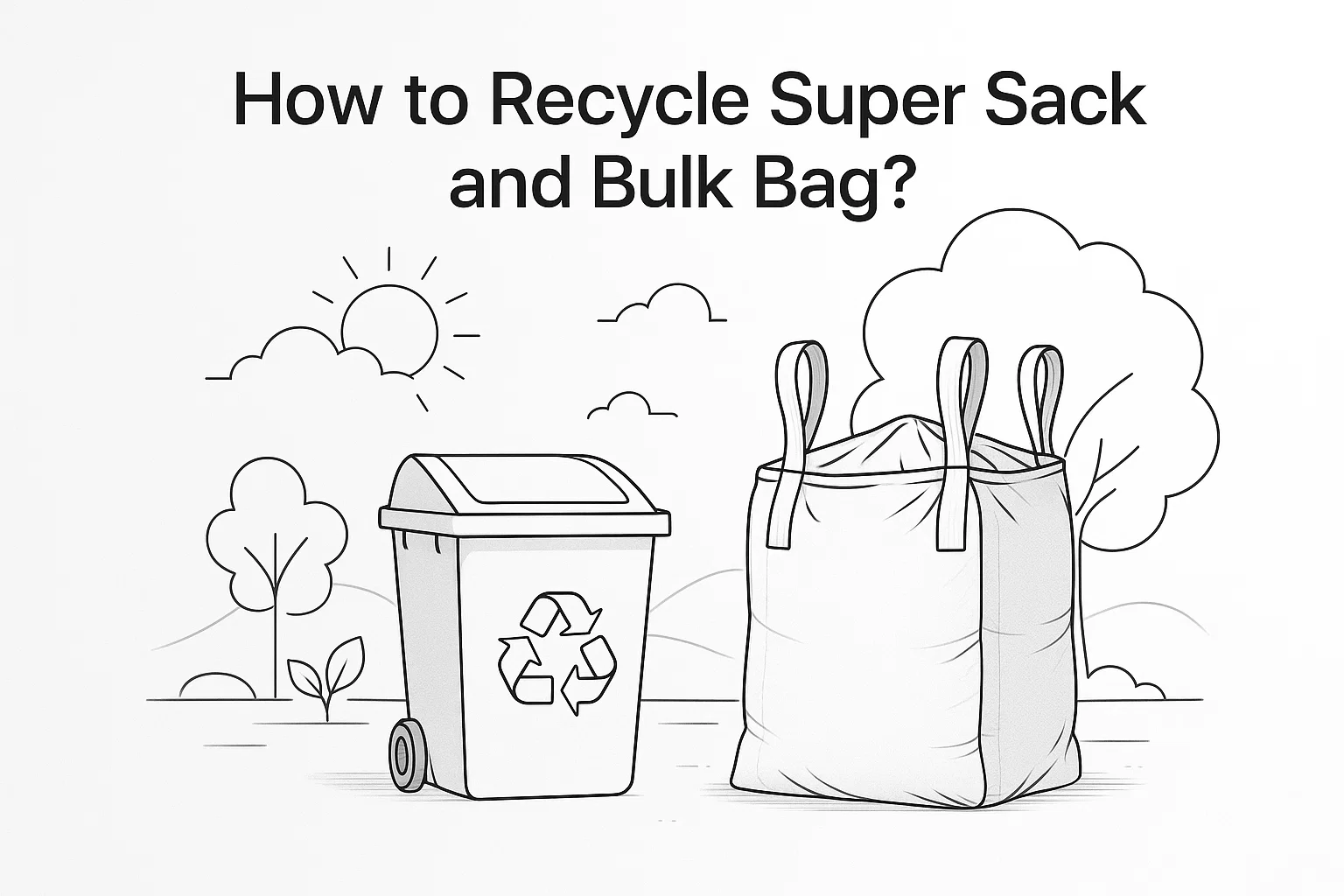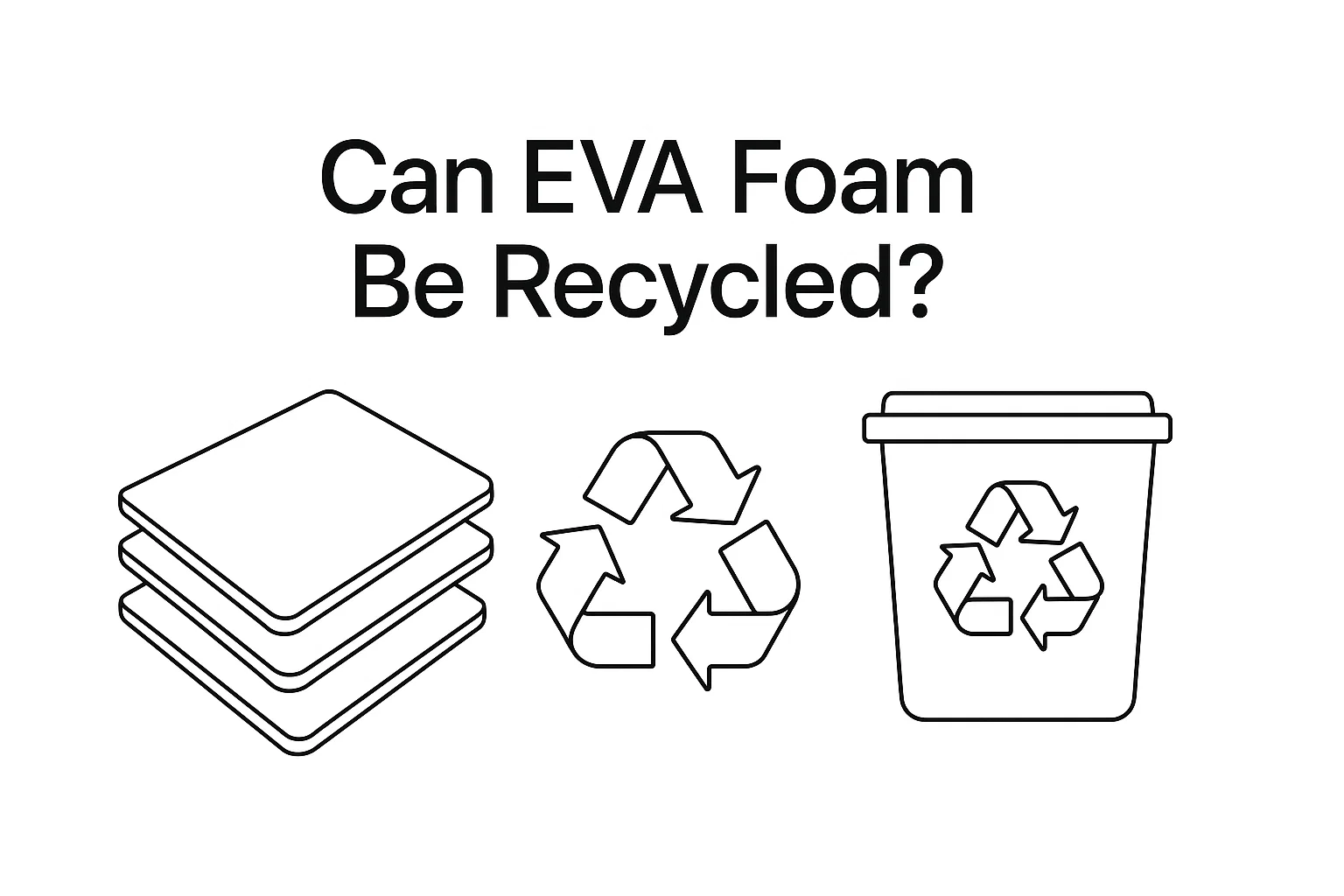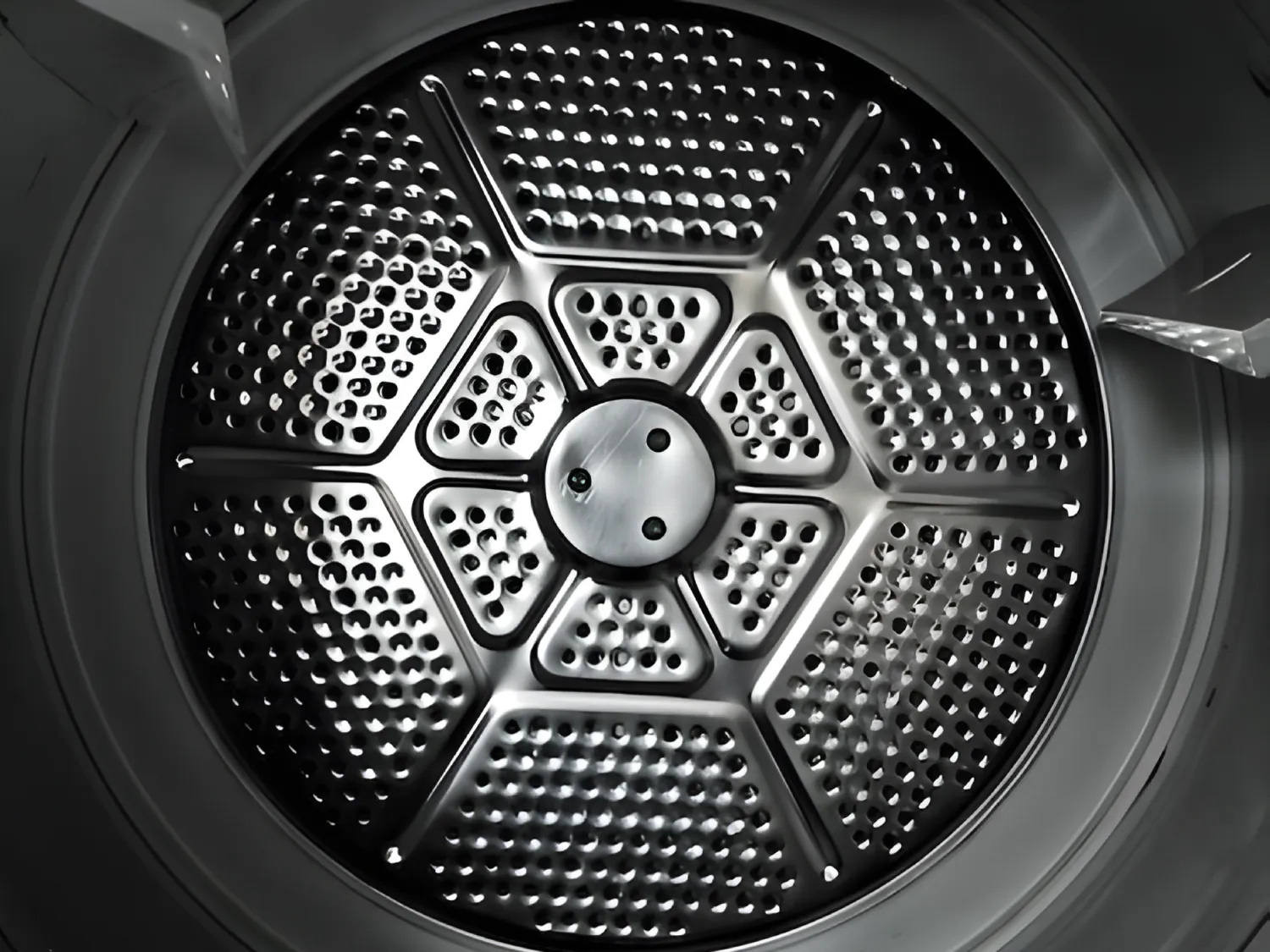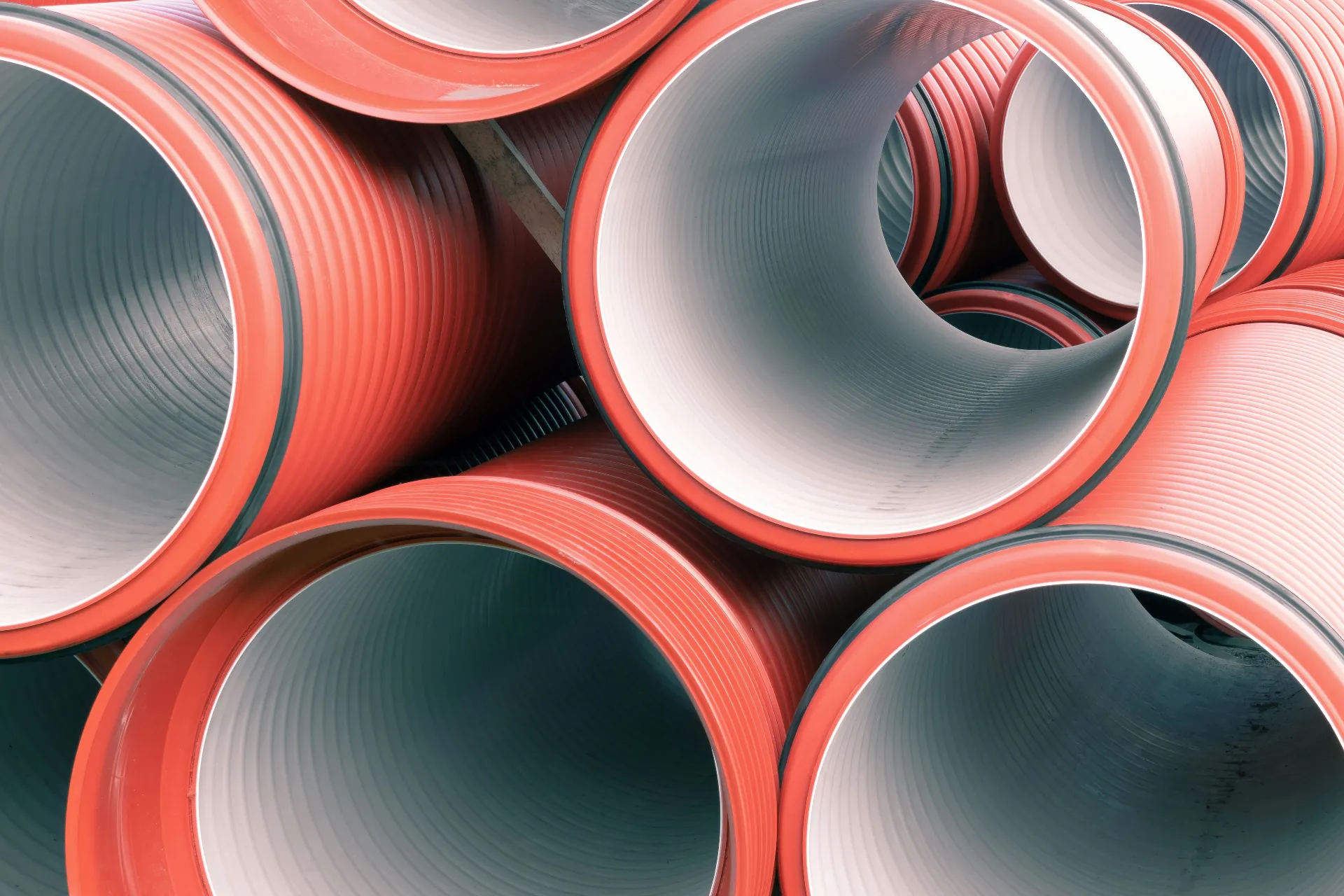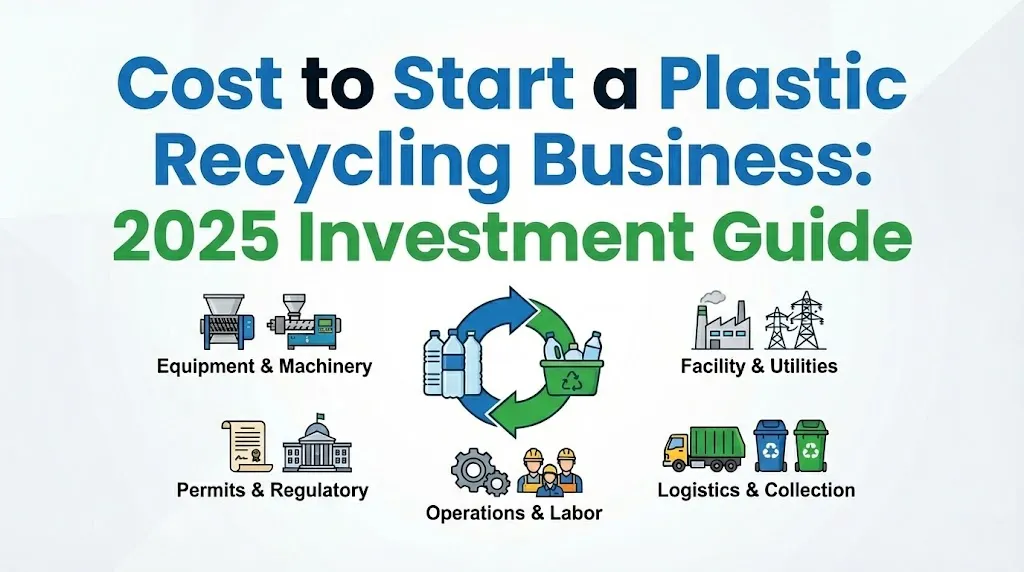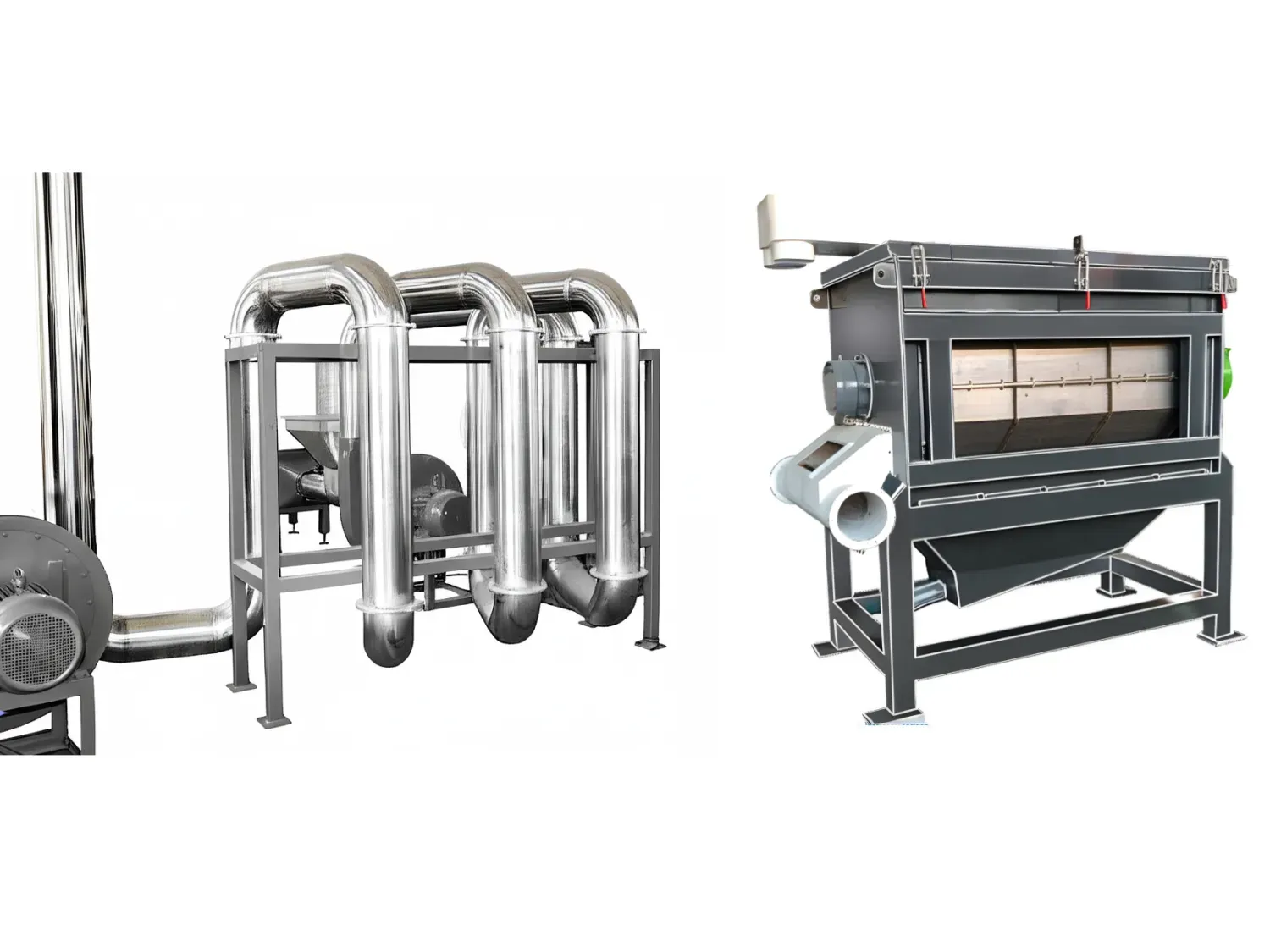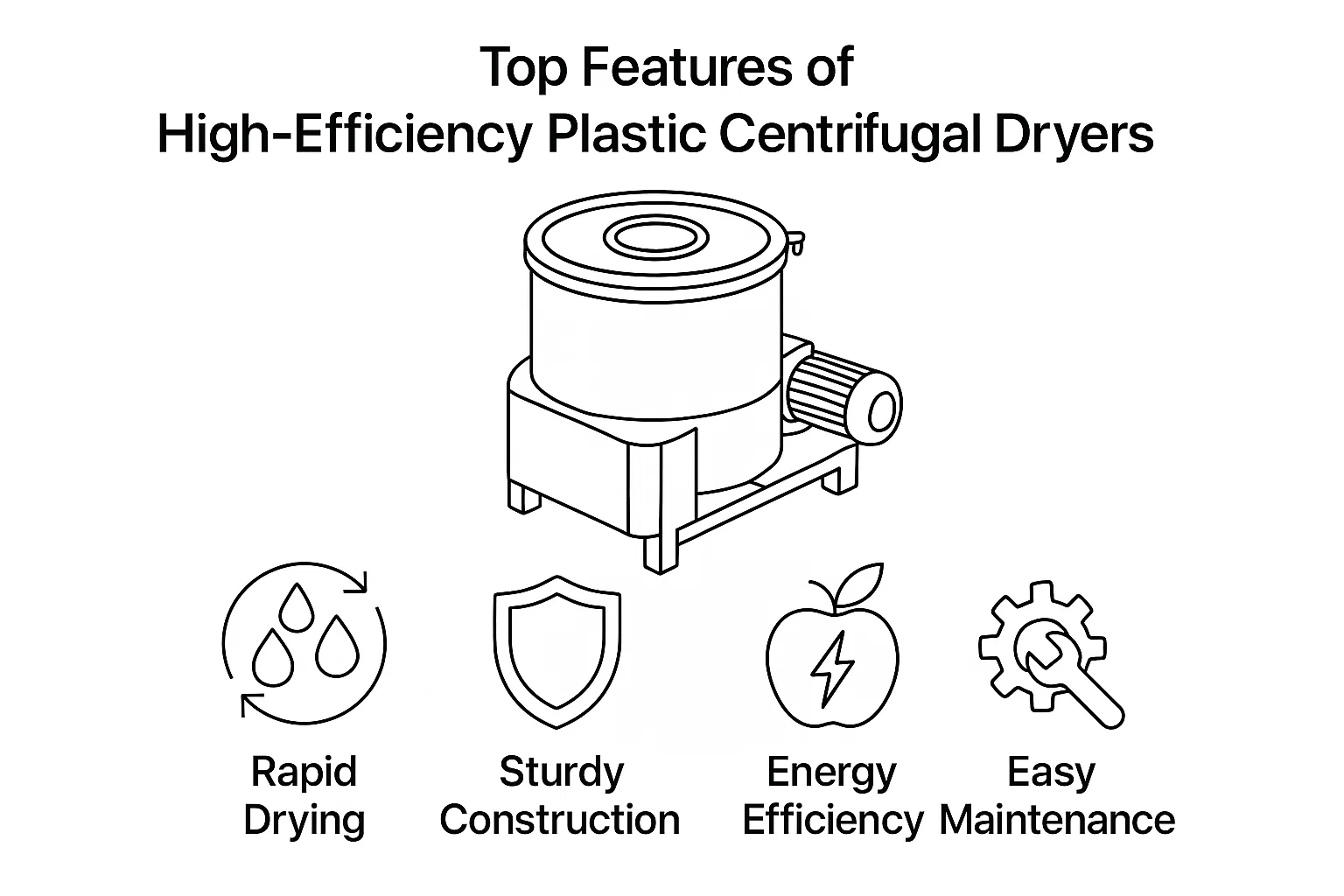Recycling-Nachrichten
Einleitung: Der verborgene Wert von gewebtem Polypropylen
In der Logistik- und Fertigungsbranche sind Super Sacks – technisch als flexible Schüttgutbehälter (FIBCs) bekannt – das Rückgrat des Materialtransports. Von der Landwirtschaft bis zum Bergbau sind diese robusten Säcke aus gewebtem Polypropylen (PP) unverzichtbar. Ihre Haltbarkeit stellt jedoch am Ende ihres Lebenszyklus eine erhebliche Herausforderung dar.
In der modernen Fertigungsindustrie ist Ethylen-Vinylacetat (EVA) allgegenwärtig. Von den Sohlen von Hochleistungsschuhen bis hin zu wichtigen Komponenten im Solarenergiesektor wird dieses Material aufgrund seiner Vielseitigkeit geschätzt. Mit steigenden Produktionsmengen nimmt jedoch auch das Volumen an Industrieabfällen und Haushaltsabfällen zu.
In der anspruchsvollen Welt des Kunststoffrecyclings ist Feuchtigkeit der Feind der Qualität. Für Werksleiter und Einkäufer entscheidet oft ein einziger Prozessschritt über den Unterschied zwischen hochwertigem Recyclinggranulat und einem fehlerhaften Produkt: Trocknen.
Durch das Waschen werden zwar Verunreinigungen entfernt, der Kunststoff bleibt jedoch gesättigt. Wird diese Feuchtigkeit vor dem Extrusionsprozess nicht effektiv entfernt, führt dies zu Blasenbildung, strukturellen Schwächen und Qualitätseinbußen im Endprodukt.
Hier ist der Kunststoffzentrifugaldryer Sie wird zum wichtigsten Bestandteil Ihrer Produktionslinie. Doch wie genau erreicht sie die Hochgeschwindigkeitsentwässerung ohne den enormen Energieaufwand thermischer Heizgeräte? Hier ein detaillierter Einblick in die Funktionsweise dieser unverzichtbaren Maschinen und warum sie so effizient ist. Energiecle Technologie ist führend.
Was ist ein Zentrifugaltrockner für Kunststoffe?
A Zentrifugaltrockner (oft auch als Entwässerungsmaschine bezeichnet) ist eine mechanische Trocknungseinheit, die dazu dient, Oberflächenfeuchtigkeit von harten Kunststoffmaterialien (wie PET-Flakes, HDPE-Granulat und PP-Abfällen) und weichen Kunststoffen (wie Folien) unmittelbar nach dem Waschvorgang zu entfernen.
Im Gegensatz zu thermischen Trocknern, die Wasser durch Verdampfen von Wärme verdampfen (ein langsamer und energieintensiver Prozess), nutzen Zentrifugaltrockner kinetische Energie. Durch die Rotation des Materials mit hoher Geschwindigkeit trennen sie das Wasser mechanisch vom Kunststoff und bereiten das Material so für den Extruder oder nachfolgende thermische Trocknungsstufen vor.
Der Energycle-Standard: Unsere Trockner sind so konstruiert, dass sie den Feuchtigkeitsgehalt auf bis zu wenige Grad reduzieren. 1-2% Bei starren Kunststoffen wird die Belastung der nachgeschalteten thermischen Systeme deutlich reduziert.
Die Physik der Effizienz: Wie sie funktioniert
Um den Wert eines Energycle-Trockners zu verstehen, muss man in die Kammer hineinsehen. Seine Funktionsweise ist ein komplexes Zusammenspiel von Aerodynamik, Zentrifugalkraft und mechanischer Einwirkung.
1. Die Nahrungsaufnahme (Fütterung)
Feuchtes Kunststoffmaterial – oft eine Mischung aus Flocken und Wasser aus einer Reibwaschanlage oder einem Schwimmbehälter – wird in den unteren Teil des Trockners geleitet, üblicherweise über eine Förderschnecke oder einen Trichter. Eine gleichmäßige Zufuhr ist entscheidend, um Verstopfungen zu vermeiden und eine gleichmäßige Trocknung zu gewährleisten.
2. Hochgeschwindigkeitsrotation und Aufprall
Das Herzstück der Maschine ist ein Hochgeschwindigkeitsrotor ausgestattet mit speziell abgewinkelten Paddeln oder Blättern.
- Rotationsgeschwindigkeit: Der Rotor dreht sich mit hohen Drehzahlen (typischerweise zwischen 1.200 und 2.000 U/min, je nach Modell).
- Auswirkungen: Beim Eintritt des Kunststoffs treffen die rotierenden Paddel auf die nassen Flocken und beschleunigen sie schlagartig. Dieser Aufprall hilft, an der Oberfläche des Kunststoffs haftendes Wasser zu lösen.
3. Zentrifugaltrennung
Dies ist das Kernprinzip. Der rotierende Rotor erzeugt massive Zentrifugalkraft, und schleudert das Material nach außen gegen die Wände der Maschine.
- Der Siebkorb: Um den Rotor herum befindet sich ein robustes, perforiertes Sieb (üblicherweise aus Edelstahl).
- Trennung: Die Kraft presst das Wasser durch die Maschenperforationen (die so dimensioniert sind, dass Wasser austreten kann, aber Kunststoff zurückgehalten wird). Das Wasser trifft auf das Außengehäuse und läuft über einen Auslass am Boden ab.
4. Axiale Bewegung und Luftstrom
Die Schaufeln sind nicht einfach nur flach; sie sind angewinkelt, um einen nach oben oder vorne gerichteten Luftstrom zu erzeugen.
- Transport: Diese Konstruktion hebt die Kunststoffflocken spiralförmig in Richtung der oberen Auslassöffnung.
- Sekundärtrocknung: Die hohe Rotationsgeschwindigkeit erzeugt einen Unterdruck, der Luft ansaugt. Die Reibung zwischen den Paddeln und dem Kunststoff erzeugt kinetische Wärme, die dazu beiträgt, Restfeuchtigkeit an der Oberfläche zu verdunsten, während der Kunststoff die Maschine durchläuft.
5. Entladung
Der getrocknete Kunststoff wird oben aus der Maschine ausgeworfen, üblicherweise in einen Zyklon oder ein Lagersilo, wo er für den nächsten Verarbeitungsschritt bereit ist.
Warum Energycle? Die strategischen Vorteile
Die Wahl des richtigen Zentrifugaltrockner-Entwässerungsmaschine für die Kunststofftrocknung Es geht nicht nur um die Wasserentfernung, sondern auch um betriebliche Effizienz. Deshalb entscheiden sich führende Recyclinganlagen für Energycle:
1. Überlegene Feuchtigkeitsreduzierung
Die Effizienz wird in Prozentpunkten gemessen. Während Standardtrockner möglicherweise eine Restfeuchte von 51 µT/7T aufweisen, streben Hochleistungsgeräte Folgendes an: <2%. Dadurch wird Ihr Extruder vor Schaumbildungsproblemen geschützt, die durch Dampfentwicklung im Inneren des Zylinders verursacht werden.
2. Mechanischer "Schrubbeffekt"
Die Reibung im Inneren eines Energycle-Trockners bewirkt mehr als nur Trocknen; sie reinigt auch. Der Hochgeschwindigkeitsaufprall entfernt Sandreste, Papieretiketten und Feinstaub (Mikroplastik), die in Waschtanks möglicherweise übersehen wurden, und dient somit als abschließender Polierschritt.
3. Energieeffizienz vs. thermische Trocknung
Die thermische Trocknung ist teuer. Sie erfordert das Erhitzen von Luft und das Halten der Temperatur. Die mechanische Zentrifugaltrocknung benötigt nur einen Bruchteil der Energie, um den Großteil des Wassers (bis zu 981 TP7T) zu entfernen.
- Kostentipp: Verwenden Sie einen Zentrifugaltrockner, um das Restwasser mechanisch zu entfernen, und nutzen Sie die Wärme nur noch für die letzte Restfeuchte. Dadurch entsteht die kostengünstigste Trocknungsanlage.
4. Langlebigkeit und Wartung
Die Verarbeitung abrasiver Kunststoffe führt zu Maschinenverschleiß. Energycle-Trockner sind mit folgenden Merkmalen ausgestattet:
- Verschleißfeste Bremsscheiben: Gehärtete Stahlklingen zur Stoßfestigkeit.
- Selbstreinigende Bildschirme: Luft-/Wasserspülsysteme zur Verhinderung des Verstopfens des Bildschirms.
- Hochleistungslager: Außerhalb der Feuchtzone gelegen, um Verunreinigungen zu vermeiden und eine lange Lebensdauer zu gewährleisten.
Anwendungsbereiche: Starre vs. weiche Kunststoffe
Es ist unerlässlich, die Maschinenkonfiguration entsprechend Ihrem Material auszuwählen:
- Harte Kunststoffe (PET-Flocken, HDPE-Flaschen, ABS): Diese erfordern hohe Drehzahlen und aggressive Paddelkonstruktionen. Ziel ist maximaler Aufprall, um das Wasser abzuschütteln.
- Weiche Kunststoffe (LDPE-Folien, Gewebesäcke): Diese sind etwas kniffliger, da sie die Siebe verstopfen können. Energycle verwendet spezielle "Quetschtrockner" oder modifizierte Zentrifugaltrockner mit niedrigeren Drehzahlen und größeren Siebperforationen, um die flauschige Beschaffenheit der Folie zu verarbeiten, ohne den Materialfluss zu behindern.
Kurzer Vergleich: Trocknung von starrem vs. weichem Kunststoff
Die Wahl der richtigen Zentrifugenkonfiguration ist entscheidend, um Maschinenverstopfungen zu vermeiden und die angestrebten Feuchtigkeitswerte zu gewährleisten. Im Folgenden werden die Unterschiede der Betriebsparameter je nach Materialart erläutert:
| Besonderheit | Trockner für starre Kunststoffe | Trockner für weiche Kunststoffe (Folie/Gewebe) |
| Zielmaterialien | PET-Flocken, HDPE-Granulat, ABS, PP-Verschlüsse | LDPE-Folie, PP-Gewebesäcke, Agrarfolie |
| Rotordrehzahl (U/min) | Hoch (1.200 - 2.000+) Benötigt hohe G-Kräfte, um das Wasser abzutrennen. | Mittel (1.000 - 1.200) Verhindert das Verklumpen oder Schmelzen des Materials. |
| Siebmaschengröße | Klein (2 mm - 3 mm) Hält kleine Partikel zurück und lässt gleichzeitig Wasser ablaufen. | Groß (5 mm+) Verhindert, dass flauschiges Material das Sieb verstopft. |
| Klingendesign | Abgewinkelte Paddel Optimiert für maximale Aufprallkraft und Reibung. | Schwenk-/Führungsarme Die Konstruktion sorgt für Materialbewegung und verhindert so ein Verwickeln. |
| Restfeuchte | < 1-2% | 3-5% (Für geringere Ergebnisse ist oft ein Föhn erforderlich) |
Fazit: Investitionen in Prozessintegrität
Der Kunststoffzentrifugaldryer Sie fungiert als Trennlinie zwischen einem verschmutzten Abfallstrom und einem hochwertigen Recyclinggranulat. Durch die Nutzung von Zentrifugalkraft, mechanischer Aufprallkraft und Luftstrom bietet sie eine schnelle und energieeffiziente Lösung, die thermische Verfahren bei der Entfernung großer Wassermengen nicht erreichen können.
Für Betreiber von Recyclinganlagen ist die Entscheidung klar. Zuverlässige Trocknungsanlagen schützen Ihre nachgelagerten Maschinen, gewährleisten eine gleichbleibende Pelletqualität und senken Ihre Energiekosten.
Bremst Ihr aktuelles Trocknungssystem Ihre Produktionskapazität aus?
Entdecken Sie die robuste Konstruktion der Zentrifugaltrockner-Entwässerungsmaschine für die Kunststofftrocknung bei Energycle und optimieren Sie noch heute Ihre Recyclinganlage.
Im modernen Zeitalter der Kreislaufwirtschaft, Kunststoffpelletierer Sie ist nicht einfach nur eine Maschine; sie ist das Herzstück der Recyclingindustrie. Für Betriebsleiter und Einkäufer ist das Verständnis dieser Anlagen der entscheidende Faktor für den Erfolg und die Rentabilität.
Bei Energiecle, Wir entwickeln Maschinen, die Kunststoffabfälle – oft als Belastung betrachtet – in hochwertige, marktfähige Rohstoffe verwandeln. Dieser Leitfaden erläutert die Funktionsweise der Pelletiertechnologie und warum sie die Grundlage für eine nachhaltige Produktion bildet.
Einleitung: Der Motor des Kunststoffrecyclings
Eine Kunststoffgranulieranlage ist eine spezielle Industriemaschine, die Kunststoffabfälle (wie Folien, Flaschen und Kunststoffreste) schmilzt, homogenisiert und zu gleichmäßigen Granulaten formt. Diese Granulate dienen Herstellern als nahezu neuwertiger Rohstoff für Produkte von Rohren bis hin zu Verpackungen.
Für Recyclinganlagen ist Konsistenz das Ziel. Eine hochwertige Pelletieranlage gewährleistet, dass Recyclingpellets die gleiche Dichte, den gleichen Feuchtigkeitsgehalt und den gleichen Schmelzindex wie Neumaterialien aufweisen, wodurch sie zu einem höheren Preis verkauft werden können.
Wie funktioniert ein Kunststoffpelletierer?
Das Grundprinzip ist zwar einfach – Schmelzen und Schneiden –, doch die dahinterstehende Technik bestimmt die Qualität des Endprodukts. Hier finden Sie eine detaillierte, schrittweise Beschreibung des Prozesses.
1. Fütterung: Der entscheidende erste Schritt
Der Prozess beginnt mit dem Einfüllen von Kunststoffabfällen, -granulat oder -flocken in den Trichter.
- Die Herausforderung: Unregelmäßige Fütterung führt zu ungleichmäßiger und sprunghafter Futterverteilung.
- Die Lösung: Moderne Systeme nutzen Zwangsförderer oder Schneidkompaktoren, um leichte Materialien wie Folien (PE/PP) effizient zu verarbeiten. Dadurch wird sichergestellt, dass die Extruderschnecke stets ausreichend Material liefert, aber nie verstopft, was den Durchsatz maximiert.
2. Erhitzen und Schmelzen (Plastifizierung)
Sobald das Material in den Zylinder gelangt, wird es intensiver Scherhitze und externen Heizzonen ausgesetzt.
- Die Wissenschaft: Die rotierende Schnecke erzeugt Reibung (Scherspannung), die 80% der Schmelzarbeit übernimmt.
- Entgasung: Entscheidend ist, dass sich hochwertige Pelletiergeräte durch folgende Merkmale auszeichnen: Vakuum-Entgasungszonen. Dadurch werden Feuchtigkeit und flüchtige Bestandteile der Druckfarbe aus den bedruckten Kunststoffen entfernt, wodurch Blasen und Defekte im fertigen Granulat verhindert werden.
3. Extrusion und Filtration
Der geschmolzene Kunststoff, der nun eine dickflüssige, zähe Masse ist, wird durch ein Filtersieb gepresst, bevor er die Form erreicht.
- Filterung: Ein hydraulischer Siebwechsler filtert Verunreinigungen wie Papieretiketten, Metall oder Holz heraus. Ohne ihn wäre das Endprodukt für die hochpräzise Fertigung unbrauchbar.
- Druck: Die Schmelze wird dann durch einen Düsenkopf gepresst, der als "Form" für die Kunststoffstränge dient.
4. Abkühlen des Kunststoffs
Sobald der Kunststoff die Düse verlässt, muss er sofort abgekühlt werden, um seine Form zu fixieren.
- Strangkühlung: In traditionellen Systemen werden spaghettiartige Stränge durch ein Wasserbad geleitet.
- Die-Face/Water Ring: Bei Materialien wie PE-Folien erfolgt das Schneiden. bei Die Matrizenfläche wird geöffnet, und die Pellets werden sofort zur Kühlung in einen Wasserring geschleudert. Dadurch werden Platzbedarf und Arbeitsaufwand reduziert.
5. Zu gleichmäßigen Pellets schneiden
Der letzte Schritt ist die Größenbestimmung.
- Strangpelletierung: Die verfestigten Stränge werden in einen Granulator gezogen und zu Zylindern zerkleinert.
- Heißschnitt (Stanzgesicht): Rotierende Klingen schneiden den noch heißen und flüssigen Kunststoff an der Formoberfläche ab.
- Der Resultat: Gleichmäßige, rieselfähige Pellets, die zum Abfüllen, Lagern oder sofortigen Verkauf bereit sind.
Arten von Pelletiersystemen: Welches benötigen Sie?
Die richtige Wahl Kunststoffpelletierer Das hängt vollständig von der Materialart (starr oder folienförmig) und dem Feuchtigkeitsgehalt ab.
1. Strangpelletierungsanlagen
- Am besten für: Technische Kunststoffe, starre Mahlgut (ABS, PA, PC) und hochviskose Materialien.
- Vorteile: Einfache Bedienung, leichter Wartungsaufwand und hervorragend geeignet zum Mischen.
- Nachteile: Erfordert das manuelle Einfädeln der Stränge beim Start.
2. Wasserring-/Matrizenflächen-Pelletierer
- Am besten für: Recycling von Post-Consumer-Folien (LDPE, HDPE, PP).
- Vorteile: Automatischer Start (keine Strangverkettung), kompakte Stellfläche und effektive Verarbeitung von Materialien mit höheren Schmelzflussraten.
- Energycle Einblick: Unsere Wasserringsysteme nutzen eine einzigartige Klingenkonstruktion, die dafür sorgt, dass die Pellets sauber und ohne "Überstände" geschnitten werden, wodurch ein Verklumpen im Trocknungssilo verhindert wird.
3. Unterwasser-Pelletieranlagen
- Am besten für: Massenproduktion und klebrige Polymere (TPU, TPE).
- Vorteile: Produziert perfekt kugelförmige Pellets mit hoher Schüttdichte.
- Nachteile: Höhere Anfangsinvestition.
Warum Energycle? Der "Käufervorteil"
In einem Markt, der mit Standardmaschinen überschwemmt wird, hebt sich Energycle durch seinen Fokus auf Folgendes ab: Gesamtbetriebskosten (TCO).
- Schraubengeometrie: Unsere Schnecken sind mit spezifischen L/D-Verhältnissen (Länge zu Durchmesser) konstruiert, die auf Ihr Material abgestimmt sind und einen geringeren Energieverbrauch pro Kilogramm Output gewährleisten.
- Haltbarkeit: Wir verwenden Bimetallzylinder und gehärtete Schrauben, um dem Verschleiß durch abrasive Recyclingmaterialien (wie verschmutzte Agrarfolien) zu widerstehen.
- Intelligente Steuerung: Unsere SPS-Systeme ermöglichen die Echtzeitüberwachung von Schmelztemperatur und -druck und reduzieren so den erforderlichen Qualifikationsbedarf der Bediener.
Abschluss
Eine Kunststoffgranulieranlage ist mehr als nur ein Zerkleinerer; sie ist ein Präzisionsinstrument, das den Wert Ihres Recyclingprodukts bestimmt. Ob Sie Industrieabfälle oder Haushaltsabfälle verarbeiten – die Qualität Ihrer Maschinen korreliert direkt mit der Qualität Ihrer Granulate.
Durch die Wahl Energiecle, Sie kaufen nicht nur eine Maschine, sondern investieren in einen Prozess, der Effizienz, Langlebigkeit und einen höheren ROI garantiert.
Bereit für die Modernisierung Ihrer Recyclinganlage?
Nehmen Sie noch heute Kontakt mit dem Energycle-Team auf, um zu besprechen, welches Pelletiersystem Ihren Produktionszielen entspricht.
https://www.energycle.com/plastic-pelletizers/
Verwandeln Sie sperrige Rohrabfälle mit spezialisierter Zerkleinerungstechnologie in Gewinn.
In der Kunststoffrecyclingindustrie stellen nur wenige Materialien eine so große Herausforderung dar wie Kunststoffrohre. Ob dickwandige HDPE-Wasserrohre, lange PVC-Profile oder überschüssige Extruderrohre – diese Materialien sind sperrig, robust und bekanntermaßen mit Standardanlagen schwer zu verarbeiten.
Bei der Plastikrecyclingprozesse für gängige Kunststoffe wie PET, HDPE und PP handelt es sich um eine komplexe Abfolge von Schritten – von der Zerkleinerung und Reinigung bis hin zur entscheidenden Aufgabe der Trocknung des gereinigten Plastiks.



